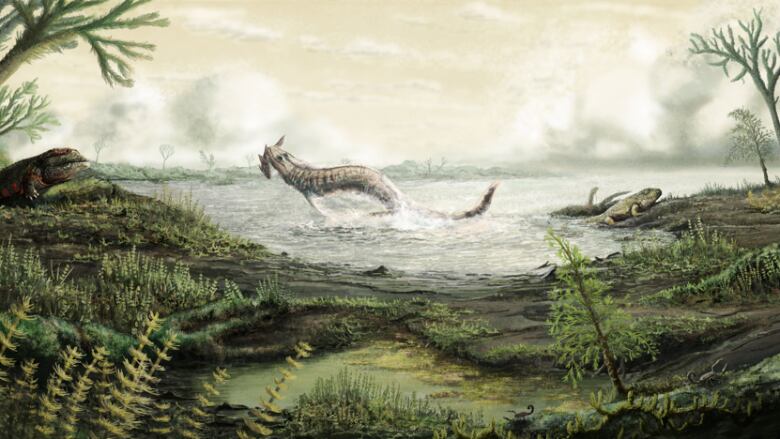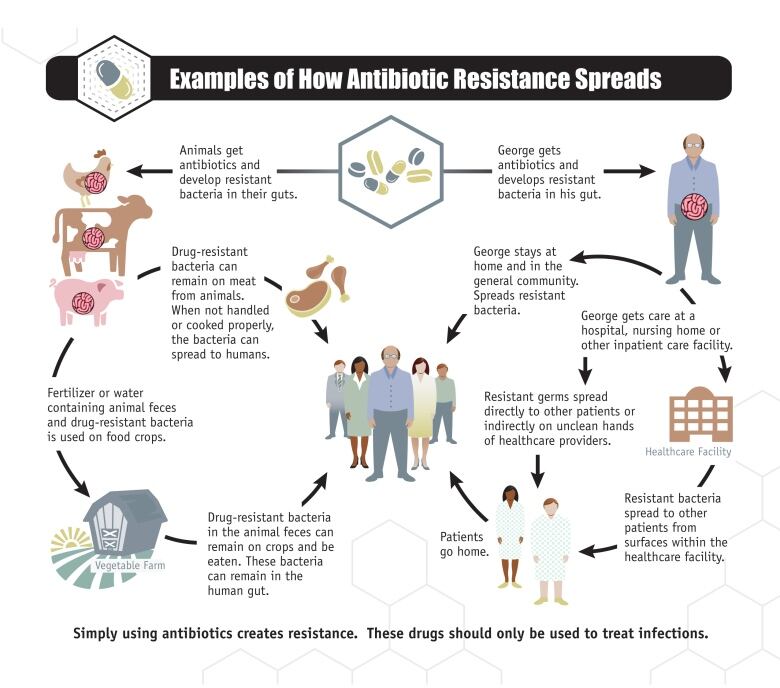Antibiotic-resistant microbes date back 450 million years, study finds
Evolution of enterococci traced back to when life was just making it to land

Antibiotic-resistant microbes have an ancestry that dates back hundreds of millions of years, even before dinosaurs roamed our planet, a new study says.
Researchers from the Massachusetts Eye and Ear, the Harvard-wide Program on Antibiotic Resistance and the Broad Institute at MIT released a study on Thursdaytracing the evolution of enterococci, a common bacteria.
- Antibiotic-resistant superbugs in spotlight at high-level UN meeting
- Superbug resistant to all antibiotics killed Nevada woman, doctors say
As life forms emerged from the oceans and transitioned from marine animals to land animals, they brought along microbes that adapted to different extreme environments such ascold and starvation, the researchers say.
As the bacteriaadapted, they began to resist things in the natural environment that could kill them, eventually emerging into the microbes we see today.
'Cockroaches of bacteria'
There are about 1,000 different types of bacteria in our gut, most of which are harmless. But there are two types enterococcus faecalis and enterococcus faecium that can cause us to become ill.While both may sound similar, they're at opposite ends of the family tree, said Michael Gilmore, co-author of the paper and a senior scientist with theMassachusettsEye and Ear.
'Enterococciare like the cockroaches of bacteria.'- Michael Gilmore, director of the Harvard Infectious Disease Institute
Anenterococci bacteria infection can cause several health problems, fromurinary tract infections to meningitis. Usually these are treatable with antibioticssuch as penicillin orvancomycin. However, ever since we began using antibiotic drugs, the microbes have been fighting back, with many developing resistance. They've come to be known as superbugs.
The researchers wanted to determine when antibiotic resistance first occurred in enterococci. Since life began, it has always tried to flourish, and bacteria of which there are 10on our planet are no different. Exceptthese microbes are especially tough.
"Enterococci are like the cockroaches of bacteria," said Gilmore, whois also the director of the Harvard Infectious Disease Institute. "They're just really, really difficult to kill."

The researcherstraced the evolution of enterococcus, sequencing its genome.They also sequenced the genomes of the branches of the family tree and compared them, trying to determine what was common in all of them.
What they found was an extra 126 extra genes that enterococci picked up since they branched from vagococcus, back about 450 million years ago.
I can't imagine you can make something for which bacteria cannot overcome. Bacteria live at temperatures and pressures that we wouldn't even dream of.- Gerry Wright, McMasterUniversity
"We think [vagococcus] arose in the Cambrian Explosion and took up residence in sea animals like fish," Gilmore said. "And then when things started crawling on the land, enterococcus arose. As new ecologies arose, as the planet changed, and new opportunities arose, new microbes arose with larger animals."
In particular, it's theenterococci'shard outer cell wall that makes them so tough and able to build up resistance.
Gerry Wright,director of the Michael G. DeGroote Institute for Infectious Disease Research at McMaster University, said that microbial resistance is just part of the natural process.
"Resistance, as this study kind of shows you, is really old," he told CBC News. "It's part of the genetic landscape of micro-organisms and has been since the first antibiotics started to be produced. That keeps growing in pace, as it's part of natural selection."
And it's unlikely that they'll ever stop evolving and developing resistance.
"I can't imagine you can make something for which bacteria cannot overcome," Wright said. "Bacteria live at temperatures and pressures that we wouldn't even dream of. More than 100 degreesCelsius; at the very bottomof the ocean with enormous pressure. They live at the tops ofmountains; they circulate in the air. They've colonized the entire planet."
Taking responsibility
While antibiotic resistance can be long established as this study illustrates it has been greatly accelerated by overuse of antibiotics. Doctors oftenprescribe them for viral illnesses, but antibiotics can only fight bacterial infections. As well, the overuse of antibioticsin agriculture isa serious threat. Each time an antibiotic is used, it gives bacteria a chance to develop resistance.
"The more antibiotics we apply, the more likely resistance is going to emerge," Gilmore said.

Gilmore said that he hopes this discovery will present a new way targeting those extra 126 genes to develop new antibiotics (as opposed to those that have been slightly modified from existing antibiotics).
"Resistance is almost inevitable," Gilmore said. "We just have to stay ahead of it.But we now know why this family became resistant. And why it became such a problemin hospitals and why it resists disinfecting. And now have some targets to shoot at. And that's a step in the right direction."












_(720p).jpg)


 OFFICIAL HD MUSIC VIDEO.jpg)
.jpg)



























































































